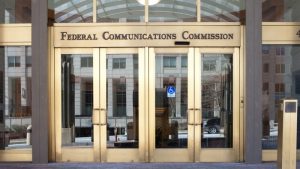The University of Rhode Island (URI) announced that it is the first academic institution not based in Massachusetts to join the Massachusetts Green High-Performance Computing (HPC) Center.
The Senate Commerce, Science, and Transportation Committee voted Dec. 15 to approve the White House’s nomination of Alan Davidson to head the Commerce Department’s National Telecommunications and Information Association (NTIA).
The Federal Communications Commission’s (FCC) Dec. 14 meeting yielded a host of rulemaking actions when it comes to hot button topics for the commission, including E-Rate broadband bidding, emergency alerts, and robocalls.
With the new year practically upon us, the National Association of State Chief Information Officers (NASCIO) is sharing its top 10 IT policy priorities and technologies for 2022.
New research found that in the 18 months since nationwide COVID-19 lockdowns began, the top priority for teachers across the United States and United Kingdom is bridging the gap between decreasing children’s engagement levels and using tech effectively in the classroom.
For almost a decade, the California Department of Technology (CDT) has hosted an annual event, usually in December, to provide the vendor community with valuable information on how their companies can partner with the State of California. Needless to say, it has become a very popular occasion for vendors seeking to determine specifics on California’s multi-billion dollar budget for the upcoming year.
Wisconsin Gov. Tony Evers, along with Wisconsin Economic Development Corporation (WEDC) Secretary and CEO Missy Hughes, announced a $150,000 grant to bolster a new pilot program that aims to train teachers and bring computer science into all Wisconsin K-12 classrooms.
The Better Cybercrime Metrics Act – legislation that aims to improve cybercrime data collection and give law enforcement more tools to stop online crime – was approved this week by the Senate via unanimous consent, and by the House Judiciary Committee via voice vote.
As part of its Future of Work pilot program, the University of Iowa has opened a coworking space for its remote and hybrid employees.
Following the Supreme Court’s decision striking down the Biden administration’s eviction moratorium this fall, political leaders and housing advocates have scrambled to find ways to keep people in their homes.














